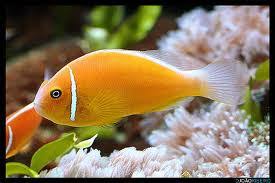Introduction to Fermented Fresh Tea in Modern Cuisine

Fermentation is an ancient culinary technique that enhances flavor, nutrition, and preservation. Traditionally applied to dairy, vegetables, and grains, fermentation has now reached the world of tea, transforming fresh tea leaves into complex, probiotic-rich ingredients.
Fermented fresh tea is emerging as a new gastronomic movement, appearing in:
✔ Artisanal beverages (kombucha, probiotic tea)
✔ Gourmet sauces & seasonings
✔ Tea-infused bread & desserts
✔ Experimental fine dining dishes
This article explores:
1️⃣ What is fermented fresh tea?
2️⃣ The health benefits of fermented tea
3️⃣ How to make fermented fresh tea at home
4️⃣ Culinary innovations: How chefs use fermented tea
5️⃣ The future of fermented tea in global cuisine
1. What is Fermented Fresh Tea?
Fermented tea differs from oxidized tea (like black or oolong tea). Instead of exposure to air, fermented tea undergoes microbial fermentation, creating unique flavors and textures.
Types of Fermented Fresh Tea
- Sheng Pu-erh (Raw Pu-erh) – Aged fresh tea, slowly fermented over years.
- Shou Pu-erh (Ripe Pu-erh) – Speed-fermented for earthy richness.
- Kombucha – Fermented tea with probiotic cultures.
- Sour Tea (酸茶, Suān Chá) – Naturally fermented in bamboo.
- Pickled Tea (Lahpet, Myanmar Tea Salad) – Fermented leaves eaten as food.
Unlike dried tea leaves, fermented fresh tea retains moisture, enhancing its nutritional value and umami profile.
2. Health Benefits of Fermented Fresh Tea
🌿 Probiotic-Rich for Gut Health
✔ Contains lactic acid bacteria that promote digestion.
✔ Supports gut microbiome balance, reducing inflammation.
💪 Boosts Immunity & Antioxidants
✔ Higher polyphenol content than non-fermented tea.
✔ Helps detoxify and strengthens immune defense.
🧠 Enhances Mental Clarity & Mood
✔ Contains L-theanine, which reduces stress & enhances focus.
✔ Fermentation enhances GABA, improving relaxation.
🍵 Lowers Caffeine & Increases Bioavailability
✔ Caffeine content is naturally reduced during fermentation.
✔ Nutrients like EGCG & catechins become easier to absorb.
With these benefits, fermented fresh tea is becoming a health-conscious ingredient in modern wellness diets.
3. How to Make Fermented Fresh Tea at Home
Fermenting fresh tea is easy with the right technique.
Method 1: Natural Wild Fermentation (Lahpet-Style Pickled Tea)
✅ Ingredients:
✔ Fresh green tea leaves (500g)
✔ Himalayan salt (2 tbsp)
✔ Garlic & ginger (optional for extra flavor)
✅ Steps:
1️⃣ Steam fresh tea leaves for 10 minutes to soften.
2️⃣ Mix with salt and pack into an airtight jar.
3️⃣ Store at 25°C in a dark space for 7-10 days.
4️⃣ Check for a slight tangy aroma—the fermentation is complete.
Uses:
✔ As a salad topping (like Myanmar Lahpet Thoke)
✔ Blended into fermented tea pesto
✔ Added to pickled vegetable dishes
Method 2: Kombucha-Style Fermented Fresh Tea
✅ Ingredients:
✔ Fresh green or black tea leaves (10g)
✔ Organic sugar (100g)
✔ Filtered water (1L)
✔ Kombucha SCOBY (Symbiotic Culture of Bacteria & Yeast)
✅ Steps:
1️⃣ Brew a strong tea and dissolve sugar.
2️⃣ Cool to room temperature, then add SCOBY.
3️⃣ Ferment in a glass jar at 20-25°C for 7-14 days.
4️⃣ Strain and refrigerate before serving.
Uses:
✔ As a fermented iced tea
✔ Mixed into probiotic smoothies
✔ Used in cocktails & mocktails
4. Culinary Innovations with Fermented Fresh Tea
Gourmet chefs are incorporating fermented tea into modern cuisine, elevating dishes with earthy depth and acidity.
🍜 Fermented Tea Sauces
✔ Pu-erh Tea Demi-Glace – Aged tea reduction for steaks.
✔ Fermented Tea Soy Sauce – Adds umami to sushi & stir-fries.
🥗 Tea-Based Pickled Condiments
✔ Lahpet Thoke (Tea Leaf Salad) – Burmese fermented tea with nuts & lime.
✔ Fermented Green Tea Kimchi – A twist on traditional Korean kimchi.
🍞 Tea-Infused Baked Goods
✔ Fermented Tea Sourdough – Adds a tangy complexity to bread.
✔ Black Tea Kombucha Glaze – Sweet, tart, and probiotic-rich.
🍷 Fermented Tea Beverages
✔ Tea-Infused Craft Beer – Aged with kombucha cultures.
✔ Sparkling Fermented Tea Cocktails – Infused with gin or prosecco.
These innovative uses highlight how fermented tea is reshaping high-end gastronomy.
5. The Future of Fermented Fresh Tea in Global Cuisine
With rising demand for functional foods, fermented fresh tea is expected to become a staple in:
✔ Fine dining & Michelin-starred restaurants
✔ Wellness beverages & alternative health drinks
✔ Plant-based diets as a natural umami enhancer
Upcoming Trends
🔥 Tea-Aged Cheeses & Fermented Dairy – Fresh tea cultures used in gourmet cheese aging.
🔥 Tea-Based Fermented Vinegars – Pu-erh vinegar for Asian fusion cuisine.
🔥 Fermented Tea Plant-Based Meat Marinades – Used for depth in vegetarian BBQ.
Final Thoughts
Fermented fresh tea is more than a trend—it’s a culinary evolution. Whether used in beverages, sauces, or fine dining dishes, its probiotic richness and deep flavors make it a must-try ingredient for modern chefs and food lovers.
Would you like to experiment with fermented fresh tea in your next meal? 🍵✨
Leave a Reply